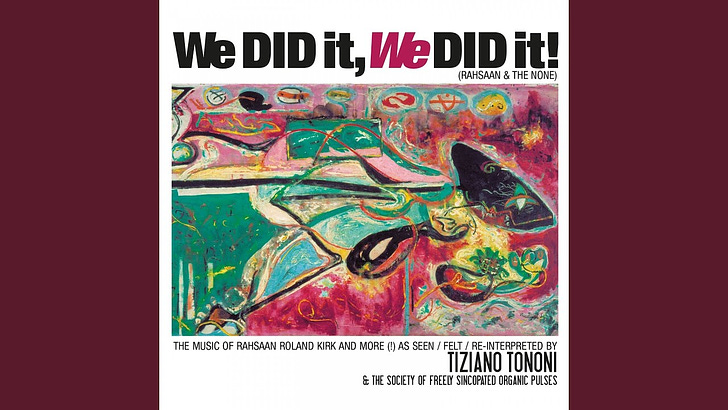1/29/2022 #50
Tiziano Tononi, Psychedelics (cont’d.), Art, Abed Ragasa, Marcus Maddox, Sami parenting, Basco Bros., the Debut, ADG7, The Jerry Cans.
UPDATE
This issue is #50! I began this newsletter exactly one year ago on 1/29/2021, in the midst of the pandemic. The once-a-week schedule of writing Eulipion Outpost has been a good discipline for me. To celebrate, here is Tiziano Tononi’s cover of Rahsaan Roland Kirk’s song, Theme for the Eulipions. I do like this (kinda psychedelic) “re-interpretation” done with the Society for Freely Sincopated Organic Impulse:
Psychedelics (Cont’d):
Hoping to continue my discussion of art and psychedelics, I am now realizing that the amount of information on this subject is a bit overwhelming; even if I only limit this to psychedelic art, I hardly know where to begin. I had planned to do some research into Henri Michaux and his experiences, but that impulse is now sliding into the background among all the other practitioners, experimenters, scholars, poets, and artists I’m encountering in my readings (so far only online).
I could start with Humphrey Osmond and Aldous Huxley, for example. “Psychedelic Art – An Exploration of the Psychedelic Aesthetic in Art” in Art in Context (2021) follows the rise of “psychedelics” citing Osmond’s scientific experimentation on schizophrenia and his relationship with poet/playright Aldous Huxley. Then, as expected, the article goes into psychedelic art as cultural and pop phenomenon, but leaving out a lot, in my opinion—like women artists. Madeleine Morley’s article “Women in psychedelic design” attempts to address that gap.
But what about the indigenous use of psychedelics? Did their use of hallucinogenic plants generate art? A group of researchers have done a study on rock art in California related to Datura quids (lumps of tobacco like substance) found in the same cave as the art.
There is a movement to decolonize our knowledge of psychedelics, or rather the “individualist and medicalizing focus on their therapeutic “effects,” as Evgenia Fotiou writes in “The role of Indigenous Knowledges in psychedelic science.” Brief mentions of how indigenous psychedelic practice incorporates the senses/sensorium in Fotiou’s essay resonate with my approach to art, for example, the use of “experiential modes” and “learning through the body” (gesture and intuitive (but abstract) line drawing)
I still have a lot to learn about this fascinating subject.
ART
A bedtime drawing and two from the “Unmapping” series:



LINKS
“Honoring the Indigenous Roots of the Psychedelic Movement.” Bia Labate’s talk at Harvard Divinity School:
19th c. art that inspired 1960s psychedelic art (in Vox):
Abed Ragasa at MATA art gallery – on migration: https://www.mataartgallery.org/forgood.html
Excellent portrait photographs by Marcus Maddox:
Arctic parenting style fosters resilience in Sami children: “A common saying among Sámi parents is "you know it yourself," meaning the child will discover if their decision is right.” What a great way to encourage a child to pay attention to their inner voice.
The Fabulous Filipino Brothers. Kind of a nostalgia thing for me, since I and my friend Elizabeth H. Pisares, as Tulitos Press, published the screenplay for the Debut: The Making of a Filipino American Film by Gene Cajayon , John Manal Castro, et al., featuring the Basco brothers:
Interview with the Debut director, Eugene Cajayon (with clips from the film):
SOUNDINGS
Here’s your antidote to K-Pop: ADG7 performing some upbeat tunes for the New Year (Tiny Desk (Home) Concert):
The Jerry Cans. A band from Iqaluit, Nunavut who combine traditional Inuit throat singing with folk music and country rock:
Until next Saturday: Don’t forget to celebrate the small triumphs.




Love the the Tiny Desk concert by ADG7. I am following them on Iinstagram now. gamsahamnida (Korean) and agyamanak (Ilocano)